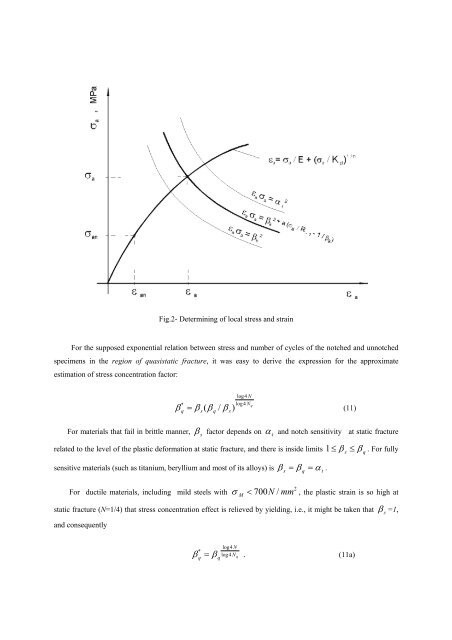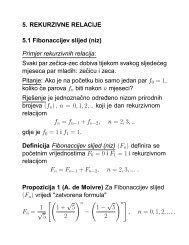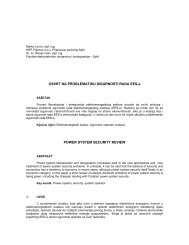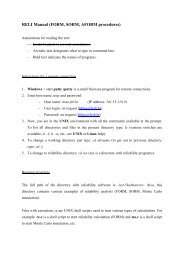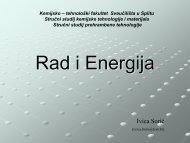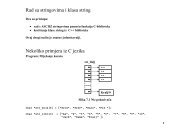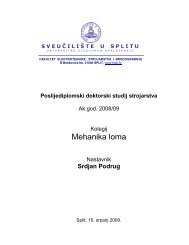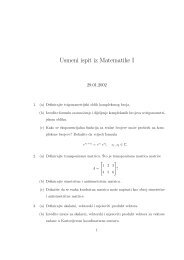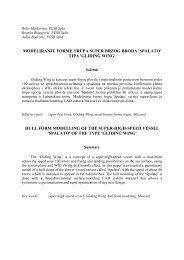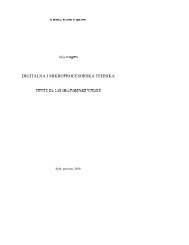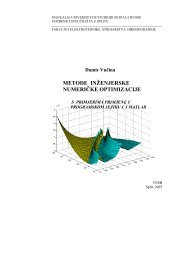ESTIMATION OF STRESS CONCETRATION FACTOR - FESB
ESTIMATION OF STRESS CONCETRATION FACTOR - FESB
ESTIMATION OF STRESS CONCETRATION FACTOR - FESB
Create successful ePaper yourself
Turn your PDF publications into a flip-book with our unique Google optimized e-Paper software.
Fig.2- Determining of local stress and strain<br />
For the supposed exponential relation between stress and number of cycles of the notched and unnotched<br />
specimens in the region of quasistatic fracture, it was easy to derive the expression for the approximate<br />
estimation of stress concentration factor:<br />
*<br />
β = β ( β / β )<br />
q s q s<br />
log4<br />
N<br />
log4<br />
For materials that fail in brittle manner, β s<br />
factor depends on α t<br />
and notch sensitivity<br />
N q<br />
(11)<br />
at static fracture<br />
related to the level of the plastic deformation at static fracture, and there is inside limits 1≤β<br />
≤β<br />
. For fully<br />
sensitive materials (such as titanium, beryllium and most of its alloys) is β<br />
s<br />
= β<br />
q<br />
= α<br />
t<br />
.<br />
s<br />
q<br />
For ductile materials, including mild steels with<br />
σ M<br />
< 700N/<br />
mm<br />
2<br />
, the plastic strain is so high at<br />
static fracture (N=1/4) that stress concentration effect is relieved by yielding, i.e., it might be taken that β s<br />
=1,<br />
and consequently<br />
*<br />
β<br />
q<br />
= β<br />
log4<br />
N<br />
log N<br />
q q<br />
4 . (11a)


